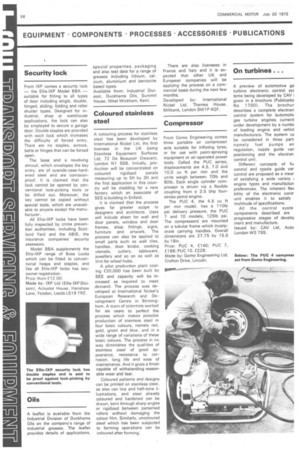Coloured stainless steel
Page 58

If you've noticed an error in this article please click here to report it so we can fix it.
A colouring process for stainless steel has been developed by International Nickel Ltd, the first licensee in the UK being Stainless Equipment Surfaces Ltd, 72 De Beauvoir Crescent, London Ni 5SB. Initially, production will be concentrated on coloured rigidized panels measuring up to 5ft by 3ft and the first application in this country will be cladding for a new factory which an associate of SES is building in Enfield.
It is claimed that the process gives far greater scope to designers and architects. Uses will include sheet for wall and door panels, window and door frames, shop fittings, signs, furniture and artwork. The process can also be applied to small parts such as wall tiles, handles, door knobs, cooking utensils, cutlery, tableware, jewellery and so on as well as trim for wheel hubs.
A pilot production plant costing £20,000 has been built by SES and capacity will be increased as required to meet demand. The process was developed at International Nickel's European Research and Development Centre in Birmingham. A team of scientists worked for six years to perfect the process which makes possible production of stainless steel in four basic colours, namely red, gold, green and blue, and in a wide range of variations of these basic colours. The process in no way diminishes the qualities of stainless steel of good appearance, resistance to corrosion, long life and ease of maintenance. And it gives a finish capable of withstanding reasonable wear and tear.
Coloured patterns and designs can be printed on stainless steel, as also can line and half-tone illustrations, and steel already coloured and hardened can be drawn, bent through sharp angles or rigidized between patterned rollers without damaging the colour film. Similarly, uncoloured steel which has been subjected to forming operations can be coloured after forming. There are also licensees in France and Italy and it is. expected that other UK and European companies will be applying the process on a commercial basis during the next few months.
Developed by: International Nickel Ltd, Thames House, Millbank, London SW1P 4QF.




































































































